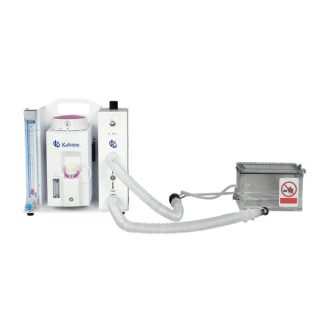The exponential advancement of technology has given rise to disruptive innovations in numerous fields and veterinary medicine is no exception. The purpose of this article is to explore one of these innovations: blower-equipped veterinary anesthesia machines. We will focus on their most beneficial and productive functionality.
To properly contextualize, we first must understand what a veterinary anesthesia machine with a blower is. These cutting-edge, precisely designed equipment allow veterinarians to accurately and controlled administer anesthetic gases to animals before and during surgical procedures. The ‘blower’ component refers to a built-in fan that ensures a steady and controlled flow of anesthetic gas.
If you want to know the catalog of high-end products that we have for you at KALSTEIN, visit us at https://kalstein.de/. We also assure you that through our online PURCHASE channels, which are very easy and viable, you will find the best PRICES on the market. Remembering that we are a MANUFACTURING Company of high-level Laboratory Equipment for SALE. https://kalstein.de/category-product/veterinary-sector/veterinary-anesthesia-machine/
A Crucial Veterinary Innovation
Being able to regulate the amount of anesthesia distributed during surgeries is beneficial, but the competitive differentiator of these machines lies in their ability to provide mechanical ventilation to anesthetized patients. This achievement is an incredibly significant step in veterinary medicine as it allows animals to maintain their breathing in a more controlled and safe way, reducing the incidence of complications and sequela.
The Most Productive Function of Blower-Equipped Veterinary Anesthesia Machines
Despite several notable features presented by this type of equipment, the most productive functionality lies in its ability to provide controlled and optimized ventilation to anesthetized animals. This enables efficient anesthesia monitoring during long and complex surgeries, where the animal’s respiratory rhythm may vary. In addition, it assists in the process of waking from the anesthetic state, which can be a challenging aspect of postoperative recovery.
The blower in a veterinary anesthesia machine contributes not only to maintaining optimal oxygen levels in the animal’s blood throughout the procedure, but also protects against the risk of barotrauma and volutrauma. These are damages to the lung tissue caused by excessive pressure or volume of respiratory gases that could lead to postoperative complications.
A Promising Future for Veterinary Medicine
Blower-equipped veterinary anesthesia machines represent a pivotal breakthrough that splits the waters in animal anesthesia. They not only make surgical procedures safer for animals, but they also make the process much more manageable, effective, and safer for veterinarians.
By improving precision and control, such innovations will continue to drive the overall effectiveness of veterinary medicine. As veterinarians have better control over anesthesia and ventilation during surgeries, they can focus on performing the procedure to the best of their ability, knowing that the animal’s state is being accurately monitored and controlled.
The progress of technology and its application in the medical field has redefined the veterinary anesthesiology department. The incorporation of a blower in anesthesia machines has improved the quality of care pre and postoperative, making this innovation an exciting representation of growth and possibilities in veterinary medicine.
The revolution of smart medical devices like veterinary anesthesia machines is a milestone in the field of veterinary medicine. These machines, powered by artificial intelligence, are changing the way anesthesia is administered to animals, providing precision, safety, and more efficient care. Undoubtedly, we are on the cusp of an exciting era in veterinary medicine, one that promises improved and more patient-focused care for our animal friends.

